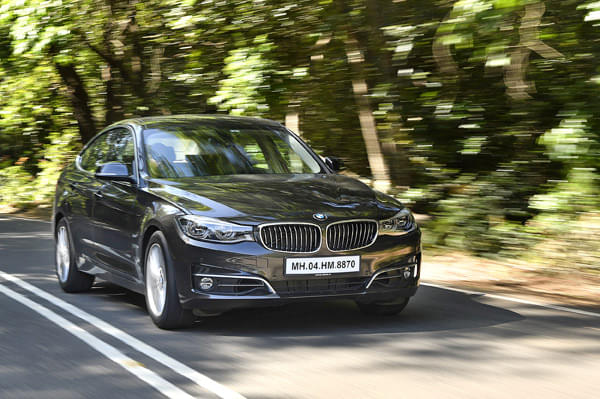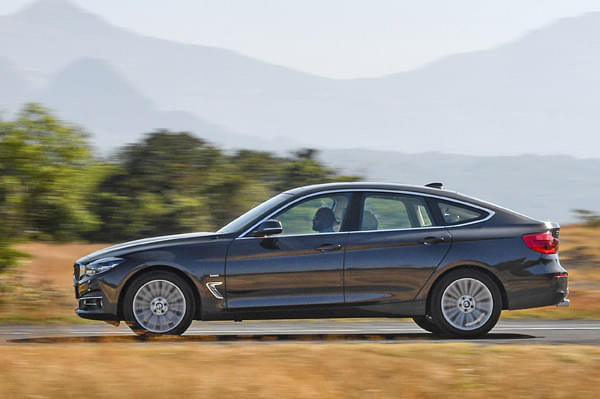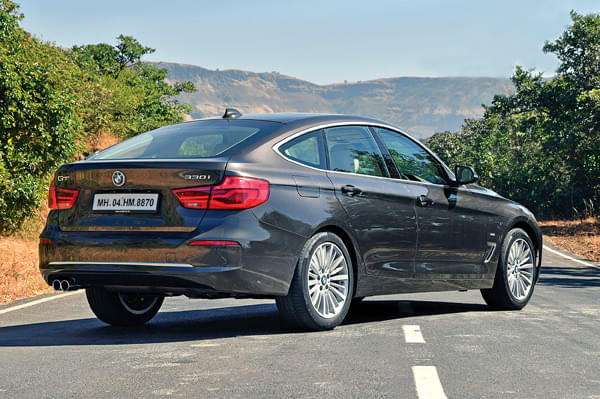What is it?
To put it plainly, the Model 3 is Tesla’s most affordable model, and has already garnered a ton of attention as the first true ‘mainstream’ offering from the electric car manufacturer. And the hype hasn’t been limited to the United States and European markets – the Tesla Model 3 has been a hot topic in India as well. Tesla started accepting Model 3 bookings from India all the way back in 2016, and a number of Indian buyers enthusiastically put down $1,000 (about Rs 67,000, back then) to book their own Model 3.
Unfortunately, the wait for the Tesla Model 3 has been long. In the intervening period, Tesla has focused on ironing out production issues and producing enough Model 3s to meet demand overseas, and has also announced plans to set up a $2 billion Gigafactory in Shanghai, China. Now, with production of the Model 3 on track, Tesla boss Elon Musk has reaffirmed the company’s plans to enter the Indian market in a couple of years’ time. When it does kick-start its India operations, Tesla will likely prioritise production of the Model 3 for our market.
What we’ve had a chance to sample is one of the very first examples of the Tesla Model 3 to hit European roads. Some said it would never live up to the hype, but experience teaches that you’re either with or against the ever-controversial Elon Musk and his world-leading electric car brand.
If you’re with him, you may very well be angrily shouting things at your keyboard right now, as I imagine fully paid-up members of the Teslarati habitually do when defending the company’s honour on social media. You may be shouting things about how Musk really does keep his promises and that we should know better than to question him. Hmm. About how despite early difficulties with the production volumes associated with the Model 3, Tesla has already smashed its 5,000-cars-per-week factory target and is now aiming for 10,000. About how, having promised a $35,000 (approx Rs 24 lakh) version of the car back at launch, Tesla has just delivered North American customers exactly that.

Let’s give the man some well-earned credit, then. Musk is, slowly but surely, realising a project considered by many to be so ambitious as to be way beyond his company’s abilities when it was first mooted. If the Model 3 succeeds, it will undoubtedly be the car that transforms Tesla from bit-part player to global player – although the recently announced downsizing of its global dealer network might suggest that outcome is still not guaranteed.
At any rate, the haters can clearly suck tailpipe on one score; while the Model 3’s India launch is still a long time away, deliveries have now commenced in Europe – albeit only in its richer and more expensive forms. It’s also the first Tesla in Europe to get a CCS charging port, so it’s compatible not only with Tesla’s own proprietary Supercharger network but also the majority of other public rapid chargers: another significant score on everyday usability.
Both versions that Europeans can now order have two electric motors and the biggest-available 75kWh battery pack. The Dual Motor Long Range trim is rated for a WLTP-accredited 544km range, makes a combined 346hp and will hit 100kph from rest in 4.7sec. The Performance trim we’re testing gives up a smidgeon of that range but counters with a combined 450hp and a claimed 0-100kph time of 3.4sec.
The Performance, however, is the most expensive variant in the range. If you bought into the big sell about the everyman Tesla, don’t fear: there will be several lesser versions, the cheapest of which, the Standard Range (50kWh battery, one motor, circa-354km range, sub-6sec 0-100kph time) should also be available in India. But we’ll have to wait for another day to report on that. For now, it’s the range-topping Performance variant we’re getting acquainted with.
The Model 3 is smaller, rather than small, for starters, and perhaps not the most pleasing of Tesla’s cars to look at. It's taller-of-profile and a bit dumpier-looking than the Model S, with less agreeable proportions that combine a low waistline with a lot of glazed area. It’s not an objectionable shape to look at, by any means; but there’s something about the front end in particular that makes it seem slightly bland and oddly characterless. It's likely due to the total absence of a radiator grille; it reminds us of those dream sequences in horror films in which somebody wakes up without a mouth.
What’s it like on the inside?
The Model 3 has, just like its stablemates, frameless doors and a brace of cargo compartments. Space up front is good and visibility, likewise, with leather chairs (you wouldn’t call them sports seats) seating you higher at the controls than in most sedans of this size – but very comfortably so.
Rear space isn’t quite at mid-sized sedan level: on head, knee and foot space, the Model 3 affords only as much room as a biggish hatchback. It's the sort of deficiency of which only a taller adult might complain, though.
Tesla claims 425 litres of boot space in total, which is comparable with what you’d get in any typical mid-size sedan. The boot looks a little bit meagre until you realise that a good chunk of the space it appears to be missing is to be found under the bonnet. The rear seatbacks fold flat to allow you to expand the rear cargo area when you need to; but because the Model 3 has a boot lid rather than a hatchback, it doesn’t make this space as accessible as the Model S.
The Model 3's driving environment is the kind that you’ll want to spend a good half-hour getting to know before you glide almost silently off into the distance. At first, it seems there isn’t much to know: a slimline dashboard entirely free of switchgear; a steering wheel hosting only a couple of unmarked scroll wheels; a steering column with an indicator stalk on one side and a gear selector lever on the other; some usefully deep storage cubbies where the transmission tunnel would otherwise be; and a 15.0-inch infotainment touchscreen installed centrally, loud and proud, in the middle of the fascia.
There's no instrument panel or head-up display, with the car’s instruments being displayed on the nearer third of the central touchscreen, instead. We’d certainly rather have a speedometer, a speed-limit display, a gear selector instrument and some indication of battery energy consumption displayed closer to the natural line of sight; but you do get used to finding the information you need, after a while.

That said, some secondary controls are needed so often that they really do merit their own button, knob or bit of dashboard real estate: electric mirror adjusters, steering column adjusters, volume control, climate control and the like.
In some cases, Tesla makes dual use of fittings to give you the one-touch control you imagine you’ve been denied; the gear selector stalk doubles as the adaptive cruise control, for example. But even so, you’d say an interior like this (undoubtedly of better perceived quality than Tesla owners might expect but slightly bare and featureless) feels a bit empty and bereft. And when that fact hurts usability, why tolerate it?
Perhaps because you’re in love with the way the Model 3 drives? You might well be. Compared with wider Model 3 specification, the Performance gets lowered steel-coil suspension, 20-inch wheels, upgraded brakes and specially developed Michelin Pilot Sport 4S tyres. That’s on top of a powertrain with four driven wheels, 450hp and 638Nm of torque from the word go.
What's it like to drive?
Even in a car weighing more than 1.8 tonnes, it’s enough to make for a lasting crick in the neck when you dive deep into the accelerator pedal’s travel at low speeds. Yet it’s not that ability that leaves the most lasting impression about the Performance. In fact, you barely need to tip into the accelerator to feel what it does best.
Even if you’re used to the instantaneous way a good modern electric car responds to throttle inputs, and the uncanny feeling of linearity of control they give you over the rate of forward progress, the Performance will be a step up. It has two driving modes: Sport and Chill (the second, no doubt christened for the approval of the Instagram generation), and in Sport, it has the kind of throttle response that would come as a surprise even to the owner of a Porsche 918 Spyder.

From low speeds, it’s almost too responsive: you have to use your big toe gingerly to avoid inadvertently activating the stability control away from T-junctions, or finding yourself executing improvised overtaking manoeuvres when all you had planned was a nip into a lull on the dual carriageway.
At urban speeds, the Performance stands ready for gaps and opportunities you probably won’t even perceive – never mind contemplate taking. Compared to a modern combustion-engined car when reacting to a green light – wasting time, turn after turn, as its engine restarts, its crankshaft spins up, its transmission locks up, its turbos spool up and then it finally delivers the thrust you asked for three or four seconds ago – it’s off like a startled greyhound barely an instant after you’ve realised that your right foot has begun to move.
Up to about 80kph, it feels quite brutal at full power: supercar-fast, without question; but different in its synapse-quick responsiveness and uncanny seamlessness. From there on, though, as the directly driven motors drop away from peak torque, its outright potency gets easier to deploy and process. Up to everyday motorway speeds, it still feels really muscular and properly sporting under your foot. Above that, the car apparently can go on all the way to 260kph, but we're not sure there are Superchargers close enough – even on the German Autobahn – to encourage us to witness the car’s ability to drain its battery at that sort of speed.
While we’re on the subject, the Model 3's range doesn’t seem to be quite what the WLTP tests suggest, but it’s still pretty good. The best energy efficiency we saw over a couple of days of testing was the equivalent of 6.2km per kWh. So driving like a saint with an aversion to more than 70kph, you might just get 480km out of a charge. Driving more typically, in mixed urban and out-of-town use and enjoying a biggish lug of power every now and again, you’ll get more like 4.5km per kWh, giving you 338km between charges. From the longer-range derivatives, you might do 10-20 percent better. Even so, it’s not quite market-leading stuff – and certainly not paradigm-shifting, in the way the Model S once was.
It’s also perhaps not the sort of electric autonomy that would have you disappear in search of great driving roads at the weekend, or take the long way home. But if you did, you would find that the Model 3 Performance handles well. It rides comfortably and handles keenly, in both cases better than either Model S or Model X manage, even if it feels rather like a heavy car doing an impression of a light one.

It doesn’t roll too much, but you sit higher in it than you’d like to, at greater altitude above the roll axis, and are therefore more aware of every degree of lateral lean. The car tries to cover for its weight with quick steering (two turns between locks) and by limiting torque at an axle that’s running short of grip, thereby helping to rotate itself in corners. It works well enough up to a point, and the car feels grippy, accurate and well-contained on a smooth surface.
The dynamic picture deteriorates a bit when the suspension has to deal with bumps as well as bends, though, when outright body control becomes poorer. It’s also a shame the steering isn’t more naturally weighted and doesn’t better connect you with the front contact patches. As it is, it feels anodyne and lifeless.
These are the reasons the Performance eventually comes up short as a driver’s car – those, at least, combined with an electric powertrain that excites at first like an intravenous drug but might be less absorbing than a great combustion engine in a more lasting and meaningful sense. Assuming that comparison is in any way relevant, of course – and it may very well not be to someone who wants an electric car for what they consider to be altruistic reasons.
Should I wait to buy one?
We dare say you’re either definitely buying a Model 3 or definitely not; either way, the outcome might not be up for debate. It's a polarising kind of car, if you’ll forgive the unintended pun. A proper Tesla, then.
When it does launch here in a couple of years, the Tesla Model 3’s India price is likely to be much, much higher than its price in international markets. On Twitter, Musk confirmed that Tesla is in discussion with the Indian government on temporary relief on import duties till it starts local manufacturing. But if Tesla can’t get a waiver on imports, shipping in cars in CBU form will likely mean the Tesla Model 3 will be one pricey EV. To give you an idea of just how pricey, this Performance variant is estimated to cost £62,000 in the UK (approx Rs 56.53 lakh). And do bear in mind that by the time the Model 3 arrives on Indian shores, the Hyundai Kona EV (likely with a 312km range) will already be on sale and maybe even the Volvo XC40 EV, as Volvo is keen on locally assembling the all-electric version of its popular small SUV.
Even at a potentially lofty price, would a Tesla Model 3 be a bigger pull for you than any other EV? Let us know in the comments.





































